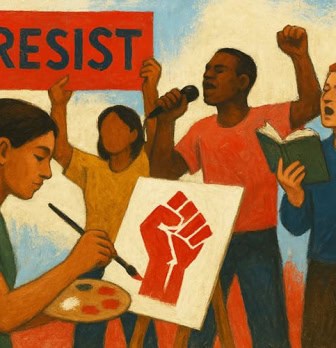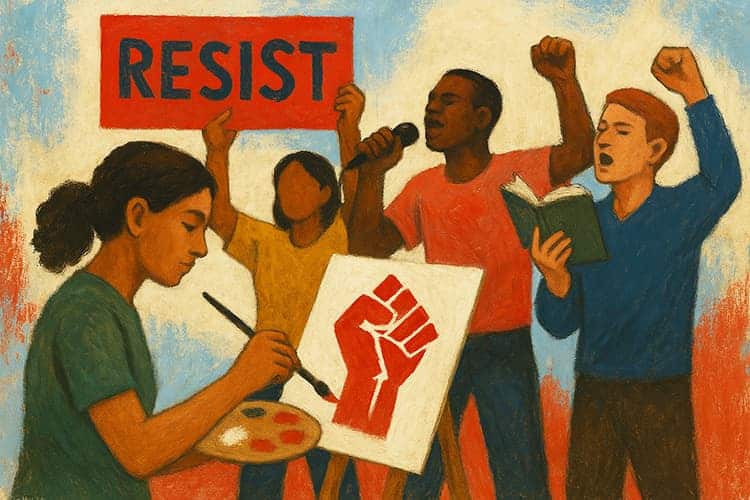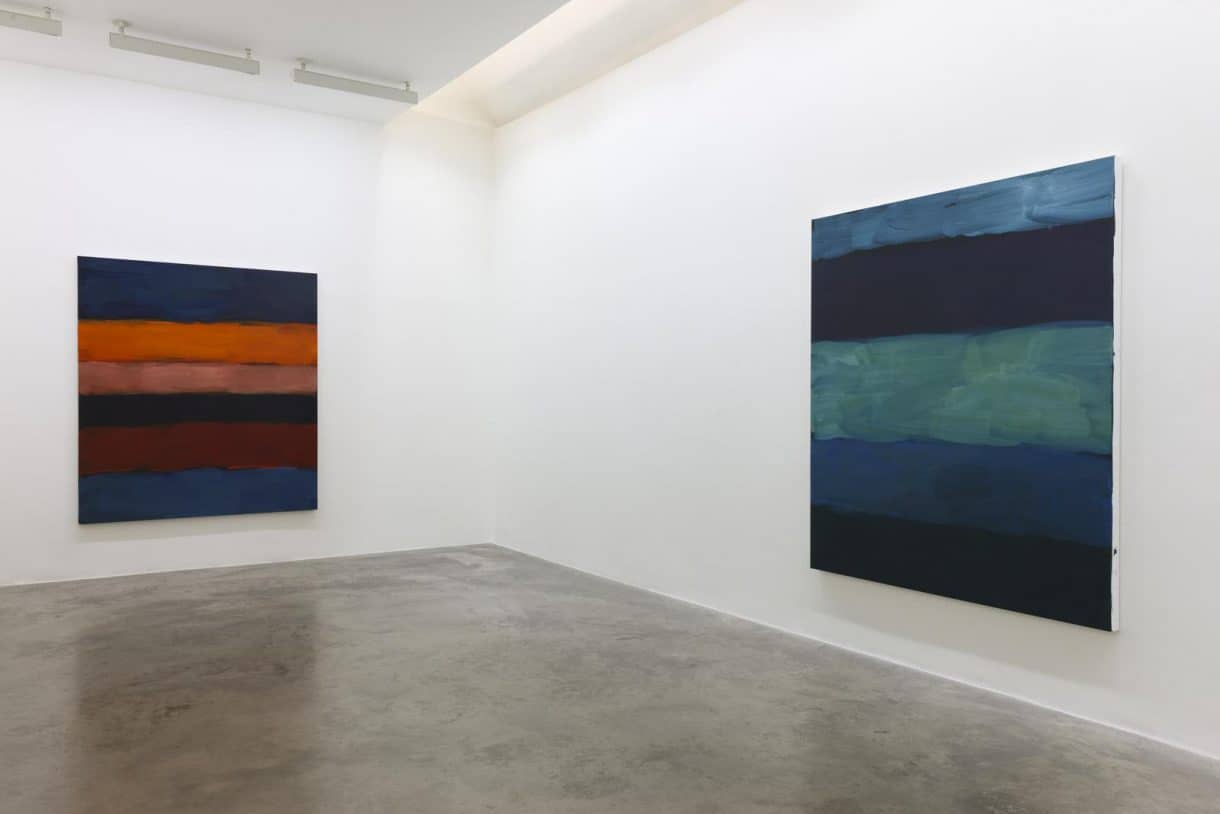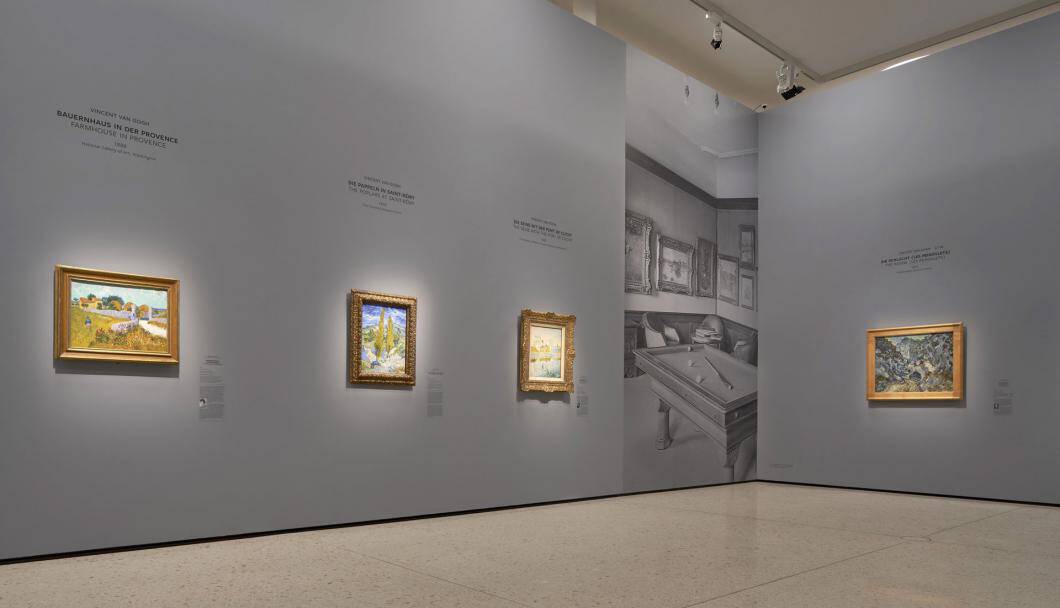Art is often seen as a space of beauty or escape, but it has long been a frontline tool in political resistance. Across continents and centuries, artists have created works that challenge authority, expose injustice, and inspire collective action. Whether it’s a mural painted on a wall in protest, a film that confronts colonial history, or a poem shared in secret, creative expression often becomes a weapon when other forms of power are denied.
In today’s global landscape of inequality, exploitation, and authoritarianism, art continues to play a vital role in movements for justice. This article explores how artistic resistance connects communities across borders, fuels activism, and creates the cultural groundwork for political transformation.
The Power of Visual Symbols in Protest
From raised fists to red flags, the imagery of protest is deeply embedded in visual culture. A powerful symbol can outlive a headline or policy document. Street artists, graphic designers, and community muralists often contribute directly to movements by giving them a visual language.
In Latin America, political muralism has been central to people’s resistance since the early 20th century. Figures like Diego Rivera and David Alfaro Siqueiros used public walls to tell stories of labor, colonialism, and struggle. Their legacy lives on today in the painted walls of Santiago, Bogotá, and Mexico City, where artists continue to confront neoliberalism, patriarchy, and state violence.
Visual art does more than decorate a cause — it makes it visible. In many regions, particularly under authoritarian rule, this visibility comes with risk. Yet even under threat, artists continue to make bold statements, proving that creativity is not neutral — it is a terrain of resistance.
Music and Memory – Soundtracks of Rebellion
Songs have a unique ability to cross borders, languages, and generations. Music has always been part of resistance movements, acting both as a rallying call and a way to preserve memory. Protest songs in South Africa, civil rights anthems in the United States, and anti-imperialist chants in Palestine have all demonstrated how rhythm and lyrics can carry the heartbeat of revolution.
Many of these songs are created collectively, passed orally, or remixed into new forms. This shared creation reflects the values of the movements they support — collaboration, horizontalism, and endurance. In times of censorship, music often becomes a safer space to express what cannot be said directly. Even instrumental music, through tone and context, can convey resistance.
Beyond just performing at rallies, musicians often use their platforms to challenge the status quo, confront governments, and uplift silenced voices. Music, like all forms of culture, is not separate from politics — it is shaped by it, and it shapes back.
Poetry, Language, and the Fight for Cultural Survival
Poetry and spoken word carry a different kind of power — quiet, reflective, but deeply cutting. In many colonized and occupied regions, poets are guardians of cultural memory. Writing in indigenous or marginalized languages becomes a form of refusal, a way to push back against the cultural erasure that often accompanies economic and military domination.
Language has long been a battleground. Colonial systems aimed to replace local tongues with imperial ones. Today, the act of writing, speaking, and performing in native languages is a radical act. Poets don’t only resist with content — they resist with form and voice.
In resistance literature, poems often serve as documents of historical memory. They preserve names, places, and experiences that official histories seek to erase. They create space for mourning and for rage. And in the process, they make room for healing and solidarity.
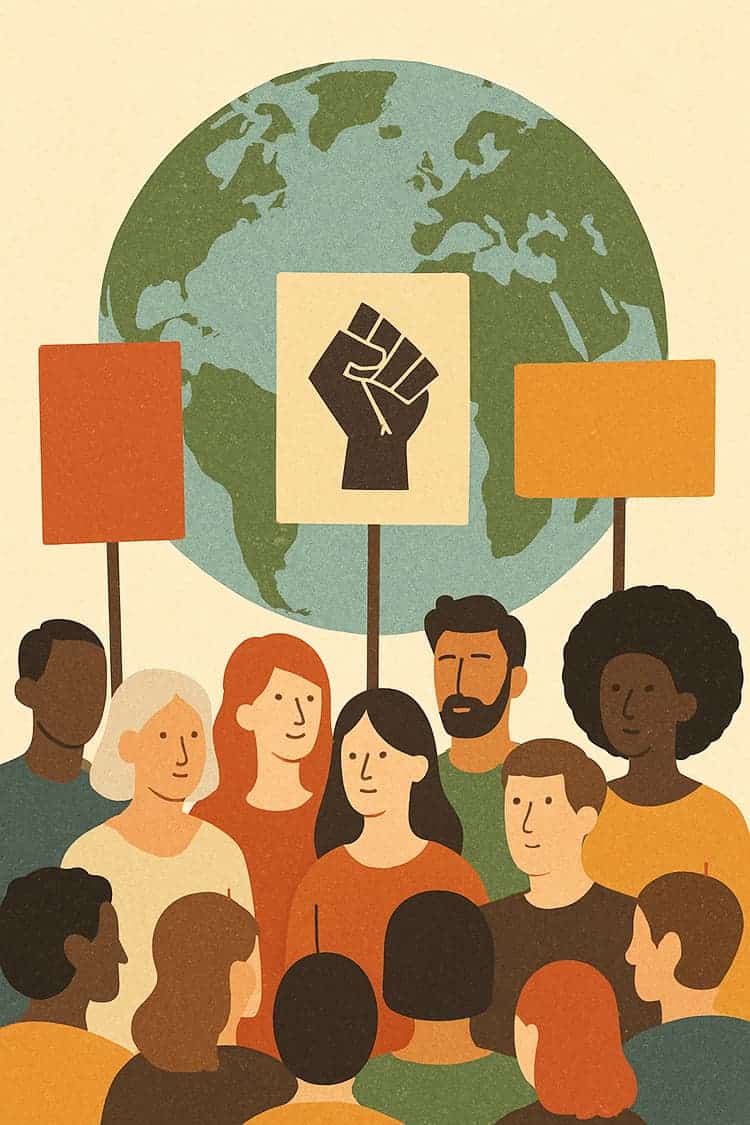
Theatre and Performance as Political Intervention
The stage, whether literal or symbolic, offers a space to reimagine society. Political theatre has existed for centuries, from the dramas of ancient Greece to the agitprop street performances of the 20th century. Today, in regions facing repression, censorship, or deep inequality, theatre remains a sharp tool for consciousness-raising and community building.
Performances that take place in the street or in public squares often blur the line between spectator and participant. They invite people into a shared emotional experience, and sometimes into direct action. In parts of the world where media is controlled or distrusted, theatre offers a more direct and embodied form of communication.
Many political movements incorporate elements of performance — processions, symbolic gestures, collective chants. These are not just tactics; they are expressions of collective imagination. Art in public space creates new possibilities for dialogue and action, particularly when the institutions of democracy fail.
Conclusion – Culture is a Site of Struggle
The struggle for justice is not only waged through laws, elections, or economic shifts. It is also waged through stories, symbols, sounds, and images. Art is not an accessory to resistance — it is often its spark and its soul.
As global movements continue to fight for climate justice, decolonization, workers’ rights, and freedom from authoritarianism, art will remain one of the most powerful tools we have. It speaks across borders, outlives repression, and imagines new worlds into being.
Artists are not on the sidelines of political change — they are right in the heart of it. And their work reminds us that resistance is not only about survival, but also about joy, imagination, and the collective creation of a better future.
